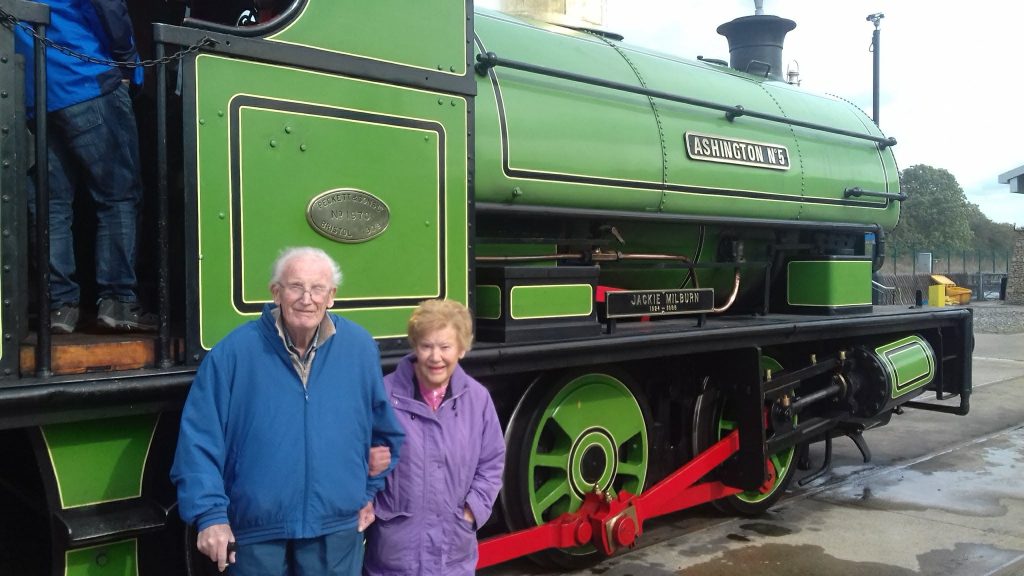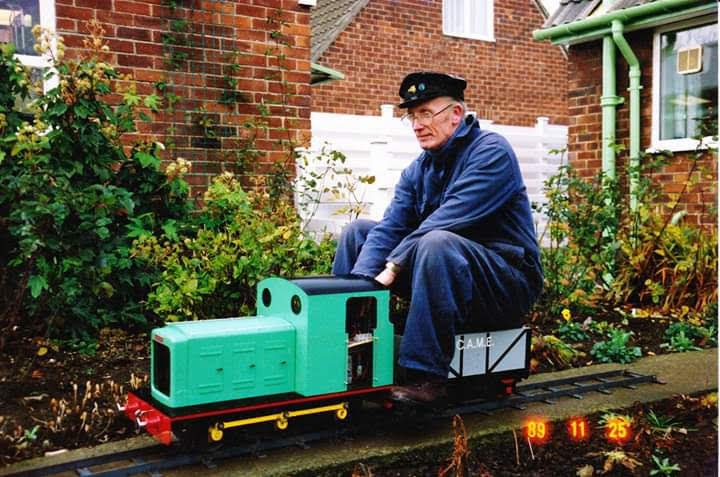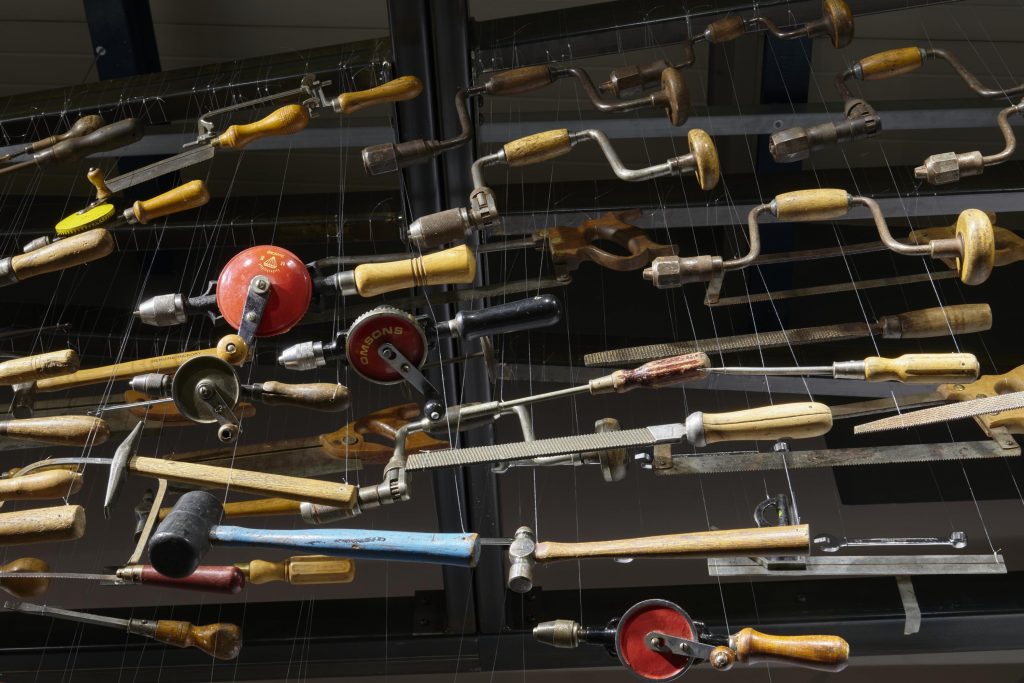As an employee of the Science Museum Group based at Locomotion in Shildon I work in the same office as Anthony Coulls, the Senior Curator whose latest project is the wonderful Brass, Steel and Fire.
About a year ago Anthony and I were having a discussion about a fantastic idea of some art work that was going to be part of the exhibition. Anthony was aware of my dad being a very keen model engineer in his past and this story unfolds from that point.

I had a discussion with my dad—Keith Dodgson—soon after my chat with Anthony. As dad was living with dementia, I always knew that our chat may be repeated many times, but he was so thrilled when I suggested that we perhaps loan or even donate some of the tools to what sounded like an incredible plan—an exhibition celebrating the history of model making and focused on steam and the railways. Dad was so excited to play a part in some way and he regularly asked me about progress in terms of the planning.
Let me tell you about dad and in particular our involvement in model making.
Born in Hartlepool in 1932, he left school at the age of 14 as a boy soldier and served in the Royal Signals Corps for nine years, stationed in many places including Catterick Garrison, Bletchley Park and Egypt. It was there when he and his fellow army comrades built a boat out of what remained of some wreckage of a Sunderland flying boat.
Dad had a passion for using his hands and making things that goes back to then, I guess. Their plan was to sail the boat down the River Nile and back to the UK, a plan that never came to fruition as their service in Egypt came to an end prior to the boat’s completion. However, dad would often reminisce on his involvement.
On leaving the Army, dad worked for Siemens, later to become GEC Telecommunications in Hartlepool in a career as an engineer and a job and workplace that he loved. This involved a two-year secondment to New York installing telephone exchanges in the city.
On mam and dad’s return to the UK in the early 1960s I was born, dad just loved his trains and steam locomotives and as I grew up my life was never far away from the railways. Many a summer holiday was spent in wales travelling on the narrow-gauge railways there. Dad particularly loved the Talyllyn Railway and as keen caravanners then and in later life without me they carried on visiting Tywyn on an annual basis at a campsite alongside the railway.

After leaving GEC, dad became a lecturer at Hartlepool College of Further Education where he worked for 23 years until retirement. I followed in his footsteps, serving my time as a toolmaker at GEC and then in IT at the same college.
It was in the late 1970s and early ’80s whilst I worked at GEC that dad started his hobby in model engineering. He would give me castings and various components for me to machine up at work, my foreman was more than happy for me to do this as I would learn far more working with materials such as brass and clamping complicated castings than I ever would in any test piece the factory could give me to do.
Dad also learned a lot of his machining and hand-crafting skills from me too, I guess he was in effect also an apprentice of me at the time. When we both worked at the same college sharing car journeys, talk often turned to dad’s latest model-making project.
Dad and I would spend many a Sunday afternoon huddled round a small paraffin stove making models. Our main project was a 2” scale Clayton Steam Wagon that we completed and took to many a steam rally. Dad was a founder member of the Cleveland Association of Model Engineers and had a spell of being treasurer for a time. Many a weekend was spent with us taking out the club track and running a 7 ¼” gauge Invicta like the one exhibited in Brass, Steel and Fire.

After I left home, dad continued with his model making. He was also involved in the early days of the Cleveland club laying a track at Tees Cottage Pumping Station at Conniscliffe Darlington—the club and track are still there to this day.
Dad made a number of locomotives of varying gauges over the years, powered by electricity as well as steam. My favourite was a 5” gauge rail motor as below. He also made various models including a Hunslet-style electric loco as well as a set of carriages modelled on Talyllyn Railway design.

Dad had a passion for experimenting with home-made tools and equipment and also bought new and second-hand tooling on a regular basis. Dad’s health meant that he stopped his model making about 20 years ago, however he continued to buy tools to add to his collection.
On 23 February 2019 he sadly passed away. The night before he died I was able to show him the visual for the artwork for Brass, Steel and Fire. His face lit up with a huge smile and he was very enthused with what he saw and confirmed his approval to the design and I know he would have been thrilled by the final work.
My family attended the opening of the exhibition. It was the first time that I had seen the tools in the artwork since Anthony Coulls and I selected them from dad’s collection. My family and I were overwhelmed at the display that is a great spectacle at the entrance to such an amazing exhibition.


It’s also a great tribute to my dad. His legacy does live on and I am really looking forward to seeing the display repeated at the Science Museum in May 2020.

While the models are wonderful the lighting display and curating of this exhibition are amongst the worst I have ever seen. Bare fluorescent tubes cause awful reflections on the cases and the all-important undersides are invisible. The 19 models are lost in this large space dominated by what appears to be a building site of stud work. And where is the mighty broad gauge ‘iron duke’ last seen languishing in York’s storage rooms?